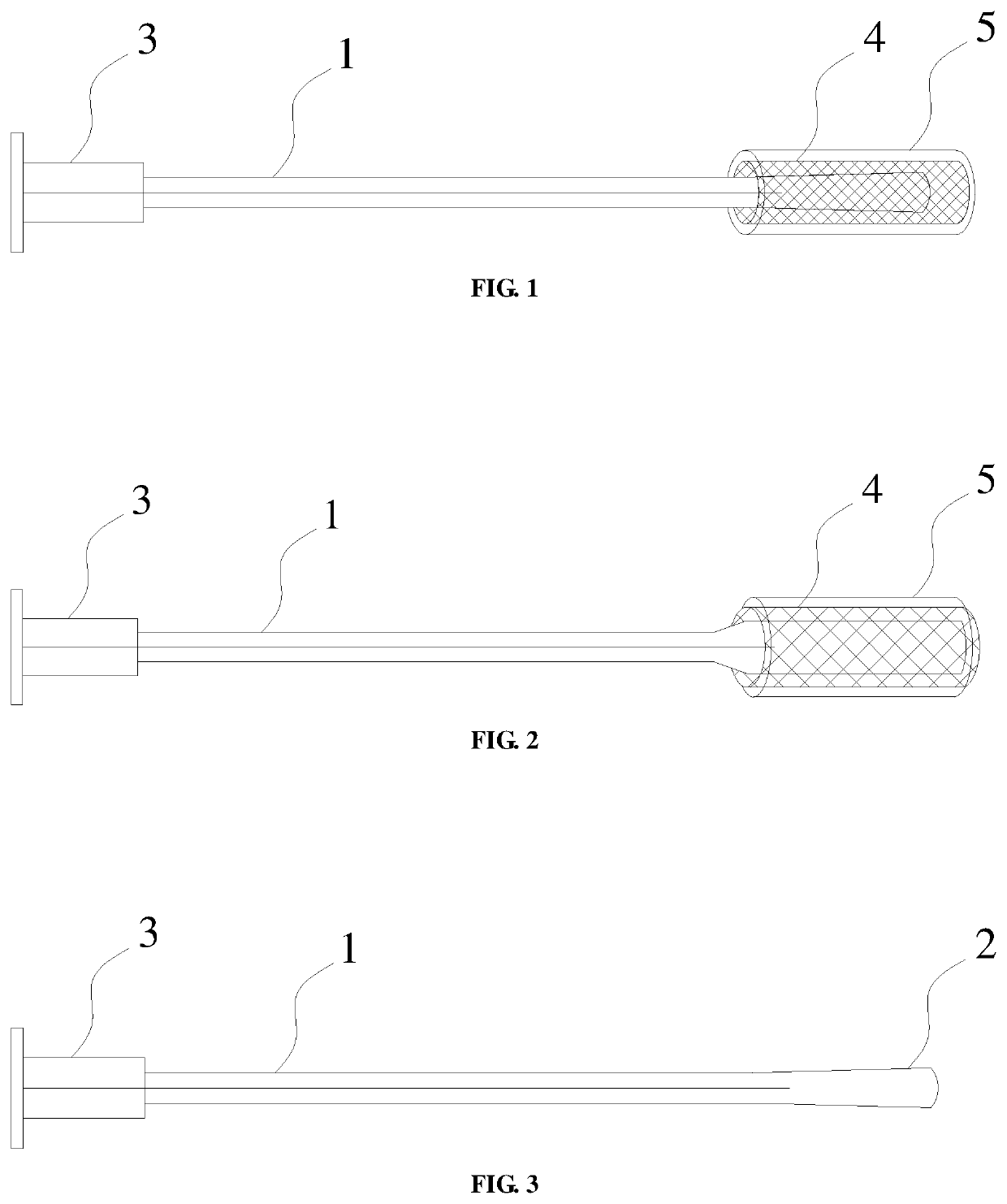A degradable foldable biological amniotic membrane composite repair stent
a bio-amniotic membrane and composite technology, applied in the field of biomedical technology, to achieve the effects of promoting repair, reducing inflammation, and reducing scar formation
- Summary
- Abstract
- Description
- Claims
- Application Information
AI Technical Summary
Benefits of technology
Problems solved by technology
Method used
Image
Examples
example 1
[0037]A degradable foldable biological amniotic membrane composite repair stent, comprising a tubular body 1 with an axially extending through hole, the front end of the tubular body 1 is provided with an elastic balloon 2, and the end of the tubular body 1 is connected to a one-way valve 3 which seals the through hole here, the elastic balloon 2 is arranged in the lumen of a foldable reticulated polylactic acid stent 4, the foldable reticulated polylactic acid stent 4 is made of polylactic acid material by laser engraving, the outer surface of the foldable reticulated polylactic acid stent 4 is coated with a biological amniotic membrane 5, and there are a plurality of micropores on meshes of the foldable reticulated polylactic acid stent 4, the plurality of micropores are filled with biological amniotic membrane powder; in the initial state, the elastic balloon 2, the foldable reticulated polylactic acid stent 4, and the biological amniotic membrane 5 are compressed into a tight st...
example 2
[0039]A degradable foldable biological amniotic membrane composite repair stent, comprising a tubular body 1 with an axially extending through hole, the front end of the tubular body 1 is provided with an elastic balloon 2, and the end of the tubular body 1 is connected to a one-way valve 3 which seals the through hole here, the elastic balloon 2 is arranged in the lumen of a foldable reticulated polylactic acid stent 4, the foldable reticulated polylactic acid stent 4 is woven from filamentous polylactic acid, the outer surface of the foldable reticulated polylactic acid stent 4 is coated with a biological amniotic membrane 5, and there are a plurality of micropores on meshes of the foldable reticulated polylactic acid stent 4, the plurality of micropores are filled with compound amniotic membrane gel; in the initial state, the elastic balloon 2, the foldable reticulated polylactic acid stent 4, and the biological amniotic membrane 5 are compressed into a tight state; in the use st...
example 3
[0041]A degradable foldable biological amniotic membrane composite repair stent, comprising a tubular body 1 with an axially extending through hole, the front end of the tubular body 1 is provided with an elastic balloon 2, and the end of the tubular body 1 is connected to a one-way valve 3 which seals the through hole here, the elastic balloon 2 is arranged in the lumen of a foldable reticulated polylactic acid stent 4, sheet-like polylactic acid and sheet-like amniotic membrane are laminated and wound on the outer surface of the elastic balloon 2, there are a plurality of micropores on the sheet-like polylactic acid and the plurality of micropores are filled with biological amniotic membranes; in the initial state, the elastic balloon 2, the sheet-like polylactic acid, and the sheet-like amniotic membrane are compressed into a tight state; in the use state, the elastic balloon 2 is injected with sterile gas or liquid to expand to adapt to the shape of the affected area, and stretc...
PUM
| Property | Measurement | Unit |
|---|---|---|
| Biodegradability | aaaaa | aaaaa |
Abstract
Description
Claims
Application Information
 Login to View More
Login to View More - R&D
- Intellectual Property
- Life Sciences
- Materials
- Tech Scout
- Unparalleled Data Quality
- Higher Quality Content
- 60% Fewer Hallucinations
Browse by: Latest US Patents, China's latest patents, Technical Efficacy Thesaurus, Application Domain, Technology Topic, Popular Technical Reports.
© 2025 PatSnap. All rights reserved.Legal|Privacy policy|Modern Slavery Act Transparency Statement|Sitemap|About US| Contact US: help@patsnap.com

